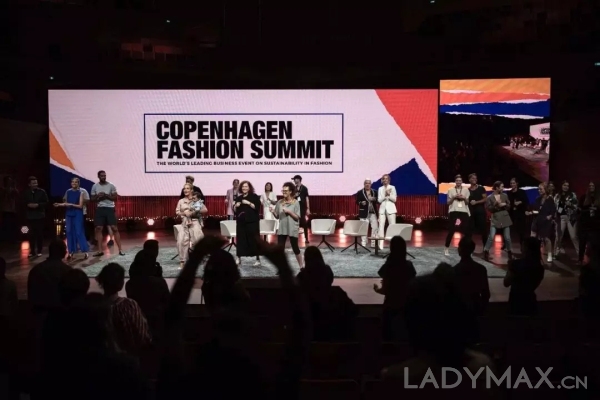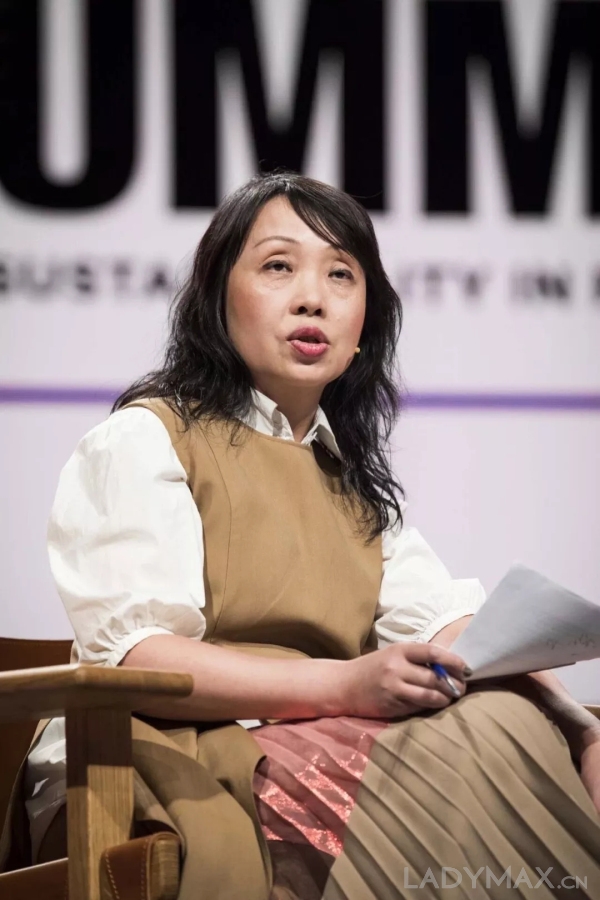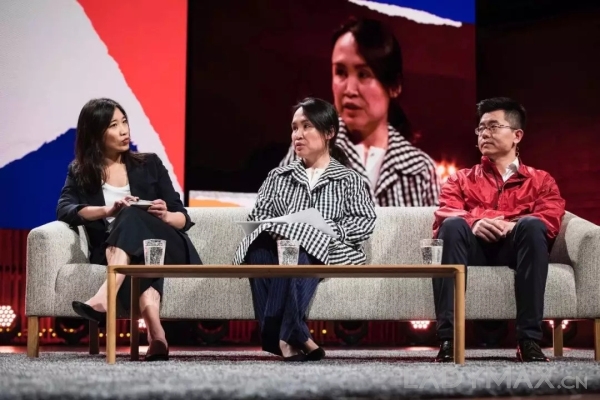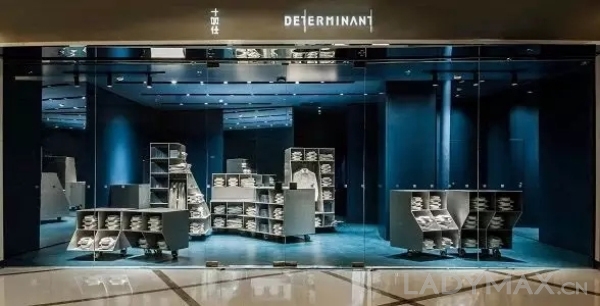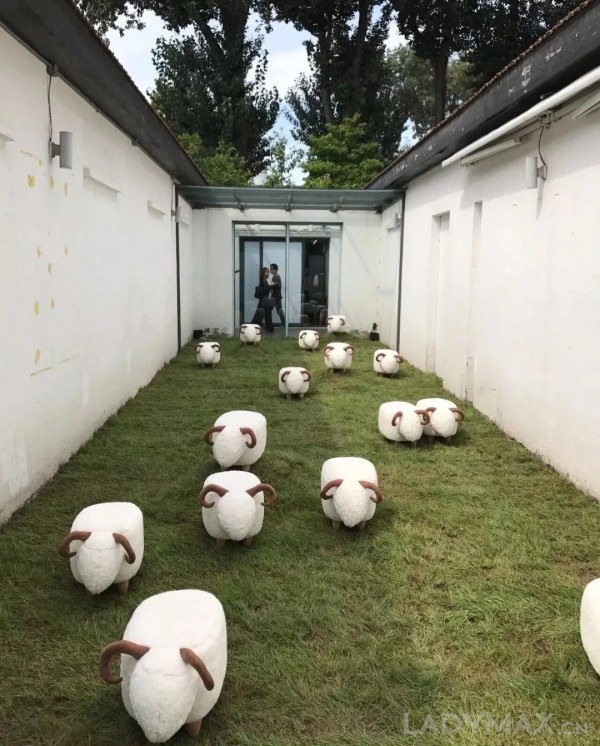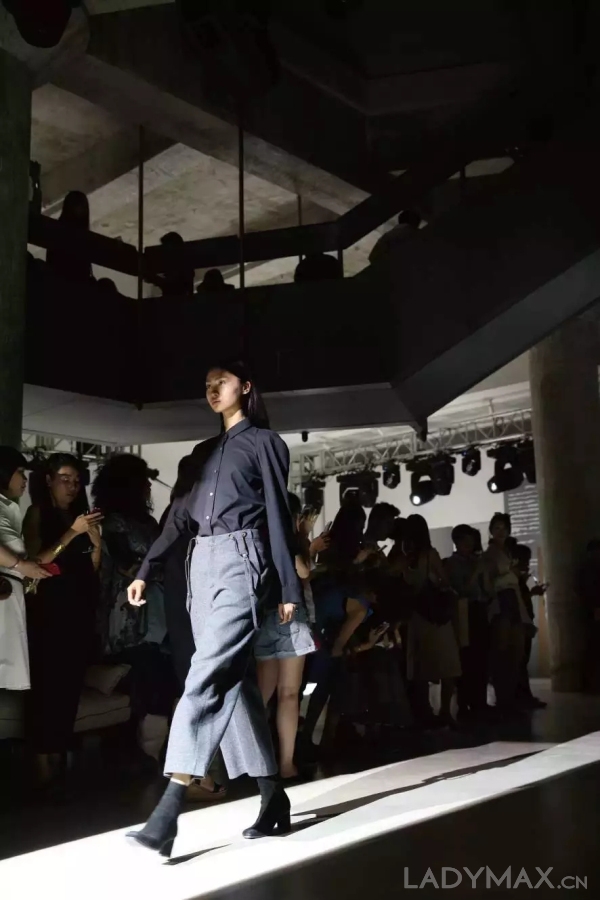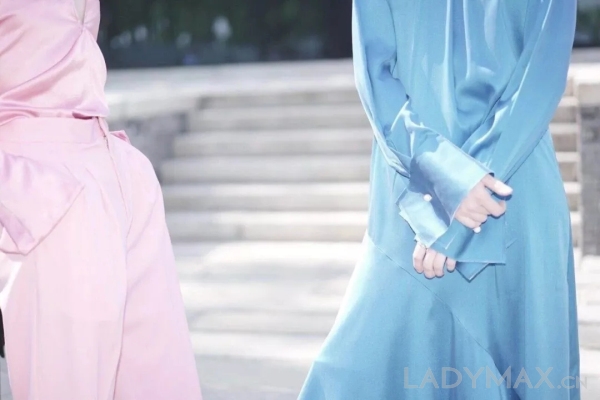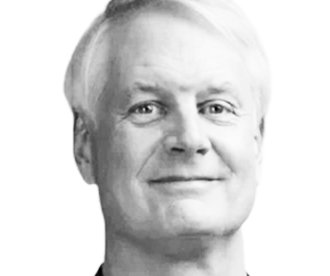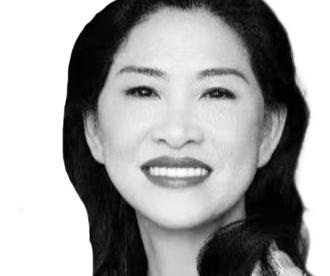By Drizzie June 12, 2018
During the dissemination of sustainable fashion in the past 10 years, China, a key player in global fashion, is almost completely absent.
In recent years, sustainable fashion has become one of the major trends in the apparel industry. The concept originated from the introduction and prevalence of "sustainable development" in the discussion of global economic issues. It was introduced into the fashion discourse system and triggers people to discuss the future of clothing, a high-energy-consuming and labor-intensive industry.
With the awakening of consumers around the world, brands that have begun to adapt to this trend are increasing. Gucci’s parent company Kering Group has issued the 2025 plan for sustainable development. LVMH, the world's largest luxury group, is also conducting studies on sustainable development with institutions such as Central Saint Martins and signing relevant commitment agreements on energy saving and emission reduction. Fast fashion brands, represented by H&M, began to recycle old clothes and launch conscious collections to be a part in sustainable fashion.
In 2009, the Copenhagen Fashion Summit, known as the “Davos Forum for Fashion”, was held for the first time, when decision-makers and opinion leaders of the global fashion industry were invited to focus on fashion-related environmental, social and ethical issues.
Since its establishment, the summit has focused on the discussion of macro issues of the industry and major players in the market. Thus from that time on, the summit is considered to be the focal point for authoritative opinions on sustainable fashion issues and is also the main driver of sustainable fashion in the past several years.
Also in 2009, Eco-Age, a sustainable fashion agency founded by Livia Firth, encouraged sustainable design power by hosting the Green Carpet Award. At the same time, Fashion Revolution, a non-profit organization founded after the collapse of the Rana Plaza factory in Bangladesh in 2013, has achieved impressive results in urging apparel brands to improve supply chain transparency and labor rights by ways of releasing annual Fashion Transparency Index report.
However, during the dissemination of the concept of sustainable fashion in the past 10 years, China, a key player in global fashion, is almost completely absent.
Over the past 20 years, China’s role in the global fashion industry has gradually changed from productivity center to consumption center. Initially, China attracted manufacturing to its southeastern coast by its cheap labor. However, after the period of demographic dividend, China shifted from an apparel manufacturing country to an essential consuming market.
According to a report released by Bain in January this year, China's luxury fashion sales in 2017 reached 142 billion RMB, or approximately US$22.07 billion, which is an increase of around 20% from 2016, the largest increase since 2011, exceeding outbound tourism shopping growth. Currently, Chinese consumers account for one-third of global luxury market sales. With the development of China’s economy, Chinese consumers consume nearly 46% of the world’s luxury goods, of which overseas consumption takes the dominating role, accounting for approximately 77%.
The domestic mainstream opinion is that the Chinese apparel market is still in the prevailing period of consumerism, where consumers’ willingness to consume is strong, but their awareness of sustainability is not mature enough. And since sustainable fashion is considered to be a reflection of “anti-consumerism” to a certain extent, it is still too early to promote sustainable fashion. Not only that, from the production point of view, many domestic apparel brands are still in the extensive operating phase, and the requirements for sustainable development exceed their capabilities.
From the perspective of communication, because of the short and rapid developmenttime, Chinese fashion media is also affected by the rapid changes in people’s reading habits. The lack of depth in the dissemination ofcontent and thereliance on celebrity culture renderthe lack of environment for media coverage of sustainable fashion. Therefore,China’s absence in the international sustainable fashion discussion is also explainable.
However,the 2018 Copenhagen Fashion Summit, which just concluded on May 16th, seems toindicate a change for China.
Shaway Yeh, Modern Media Group Style Director and the founder of yehyehyeh,once the editor-in-chief of the China's most avant-garde fashionmagazine Modern Weekly, hosted a paneldiscussion on sustainable Chinese fashion at the summit, inviting Dee Poon, CEO of Esquel Group's ChinaRetailing Department, Tana Dai, ExecutiveDeputy General Manager of the Brand Division of the ErdosGroup, and Robby Gu, Vice presidentof investment and innovation of JNBY Group, who arerepresentatives of the three major domesticapparel groups.
Shaway Yeh, the third-yearspeaker at the summit, held the panel talk for thefirst time. In doing so, domestic apparel brands have entered the globalsustainable fashion discourse.
In fact, the three domestic apparel groups represent different types of apparel brand operationmodels in China.
Asone of the largest cotton textile and apparel manufacturers in China, Esquel Group has factories in China, Malaysia, Vietnam, Mauritius and Sri Lanka to supply shirts for high-end brands such as Hugo Boss and TommyHilfiger. Meanwhile, the group has its own brand PYE and Determinant. The production line extends from cotton cultivation to the whole industrial chain of spinning, weaving, dyeing and finishing, garment manufacturing, export and retail, and is a typical representative of the current status of China's apparel industry supply chain.
Similarly, Erdos, a 30-year-old cashmere brand known to the Chinese people, is also a traditional vertical industry chain group from pastures, sheep breeds, cashmere, and finally to clothing. Currently, it hasfour brands targeting different customer segments, Erdos, Erdos1980, 1436 and Blue Erdos.
JNBY Group was established in Hangzhou in 1997. There are five clothing brands under the group, including womenswear JNBY, menswear CROQUIS, children's wear jnby by JNBYand Pommede terre, as well as high-end womenswear‘less’. The group has also extended its reach into the home decoration field and established JNBY HOME.
Relatively speaking, Esquel Textiles has more connection with the global fashion industry chain and luxury brands, and has accumulated more experience in the global supply chain. The challenge comes from the global sustainable fashion to supply chain production environment, transparency and efficiency.
Erdos represents the traditional Chinese mass brand and has been branded with a feeling of nostalgia. It focuses on local raw material supply and production processes and has profound experience in the domestic retailing and channel construction. The challenges currently faced come from the upgrading of traditional brands.
What JNBY represents, on the other hand, is more of a new generation of Chinese apparel brands, with a brand portfolio focusing on the niche markets, putting more weight on product design and marketing, brand image shaping, CRM and other end market strategies.
In China's diversified fashion apparel market, brands' differentiating positions indeed have different interpretations of sustainable fashion.
According to Dee Poon, “The Esquel Group's two areas that we are really focusing on is climate change and wealth gap. Since 2005, the Esquel Group’s water and energy consumption have come down by more than 50%. Our average worker is paid pretty much as much as a young medical worker in China.”
The group's sustainable fashion practice is basically in line with the current global expectations of major manufacturers. Although it is less influenced by theChinese market, it is important that in the current Chinese society’s relatively narrow understanding of sustainable fashion, laborrights are important. In addition to the production process, Determinant, a new brand of Esquel Group, specializes in the production of white shirts in different personal sizes, and it is the classic style ofanti-blindness and over-consumption.
Erdos hopes to ensure the grassland ecology and environmental protection, optimizevertical supply chain, strengthen product tracking and forecasting, and more precisely control inventory to reduce idle resources and waste.
Tana Dai stressed that "one of the biggest challenges in the fashion industry is how to increase the rate of goods sold and reduce unnecessary inventory." The online market is becoming the solution to this problem. With the continuous improvement of China's e-commerce market and logistics, Erdos has achieved online and offline sales of its inventory, and has been able to continuously improve product sales efficiency after mastering the data.
Beyond the commercial dimension, Erdos is an ational brand that focuses on quality. It is also trying to enhance the sustainability of products by emphasizing product durability and emotionalvalue, such as providing product recovery and repair services in stores.
It is worth noting that the Esquel Group and Erdos, both operating vertical supply chains, have touched sustainable fashion in many aspects of the industry chain, from production todesign, emotional value to sales, not only at a single aspect.
JNBY's practice of sustainable fashion represents the demand for a new bunch of domestic commercial brands. Robby Gu throws an important point in the summit. “For JNBY, the emphasis on sustainable fashion is not only an ethical decision, it’s a business decision.”
The traditional view is that sustainable development usually takes the premise of sacrificing commercial interests. Robby Gu's point of view clearly provides a new perspective for Chinese apparel brands to understand sustainable fashion. He further explained that JNBY’s original motive to use natural environmental fabrics was to prevent competitors from copying. The higher-priced green fabrics have opened up gaps in quality with other products, and have also ensured the uniqueness of the brand.
Accompanied by the rise of artistic styles including in the movie, TV and music fields around 2010, the artisticstyle that JNBY took to create first appeared very avant-gardeat that time and quickly attracted a group of consumers who were independent in aesthetic attitude. Since then, as the trend of consumption upgrade in theChinese market has spread in recent years, consumers have increasingly valued the brand value. This group of consumers who are more willing to pay for valuable brands has become the target of all high-end brands.
Of course, these consumers are also more sensitive and willing to follow the sustainable fashiontrend.
In fact, the consistency between sustainable fashion and business considerations is necessary for JNBY,which is experiencing the most rapid development of commercial value in the brand history. According to LADYMAX, JNBY’s net profit jumped 37% during the first half of the fiscal year, and VIP contributed 1.1 billion yuan of revenue. Since the beginning of this year, JNBY(3306.HK)’s share price has risen by 100%, and the current market value isabout 10 billion HKD. It is 3 times themarket value at the time of listing in 2016.
From another perspective, JNBY’s interpretation of sustainable fashion is also a return to the perfection of products. This coincides with Dee Poon’s point of view. “I do not believe that the majority of consumers would pay more for sustainability or not buy something because it’s not sustainable. But it doesn’t mean as a manufacture, we cannot offer great products with sustainability. "
This also reveals the fundamentals of sustainable fashion, that is, the design capabilities of products and apparel brands. Back to the original question-is it too early to talk about sustainable fashion in China? From the perspective of consumers, consumption upgrades make middle-class consumers willing to accept attractive and sustainable products.
Even the sinking channel consumers in the third and fourth tier cities, the current downward trend of consumer consumption also brings opportunities for sustainable fashion, because this group of consumers is pursuing faster and cheaper purchases and has to force a large number of physical store packages.The apparel companies go to the online market and move towards more refined product tracking and forecasting. This means that the degree of mechanization of the supply chain and the increase in the level of the workforce also means moving toward higher business efficiency, which is sustainability for a business.
Robby Gu bluntly said, “The Chinese market is more than ready [for sustainable fashion]. Chinese consumers adopt new trends faster than anybody else. On the demand side, we are ready. It’s really on the supply side, we should know clearly what the brand needs to do.” However, sustainable fashion is no longer ahead of the Chinese brands. Both the commercial brand and the designer brand in the Chinese apparel market are gradually showing concern for sustainable fashion.
In addition to the above three brands, high-end womenswear brand Edition, which is under MO&Co.’s parent company EPO Group specializesin the exploration of sustainable fashion in the latest series. The series extracts from the Oriental Philosophy a reflection on commerciality, including concerns about sustainability, opposition to overproduction and practicality. The brand stated that it will continue to pay attention to and effectively participate in global environmental protection, women's rights and other global issues, and start cooperation with a number of international sustainable development agencies.
Founded in 1997, ICICLE has been committed to becoming a representative brand of high-end environmental protection in China in recent years. It provides high-quality, easy-to-care, natural commuting equipment for middle-class women.It is worth noting that ICICLE also has the first eco-friendly baby wear brand ECO BABE in China.
The designer brand with more emphasis on the concept has also emerged many brands that demonstrate sustainability. For example, the “Reclothingbank” founded by designer Zhang Na aims to remake the oldclothes into the brand's main purpose. Central SaintMartin graduate Momo Wang established her own brand the Museum of Friendship, with help from a craftsmen team in her hometown Jinzhou. MS MIN started with the Taobao business but built a sustainable brand concept in Xiamen's slow life.
In general, Chinese companies still lag behind in sustainable fashion product innovation. As a result, more and more third-party agencies have emerged, hoping to help their development from the perspective of communication andchannel distribution.
Last year, Kering Group and Shanghai Fashion Week reached acooperation. The former opened a “Kering Innovation Luxury Lab” during Shanghai Fashion Week and released the WeChat applet of MyEP&L, an environmental profit and loss calculation tool.
Shaway Yeh founded yehyehyeh in 2017, a creativeagency bringing together sustainability, creativity and innovation to instigatevalue-based change. It aims to offer consultancy and creative solutions for forward-thinking brands.
In every single area of the industry-production,consuming market, and media environment, the idea of sustainable fashion hasalready started to grow.
Once the bridge between sustainability and business are built, It could be a new opportunity for domestic brands.

